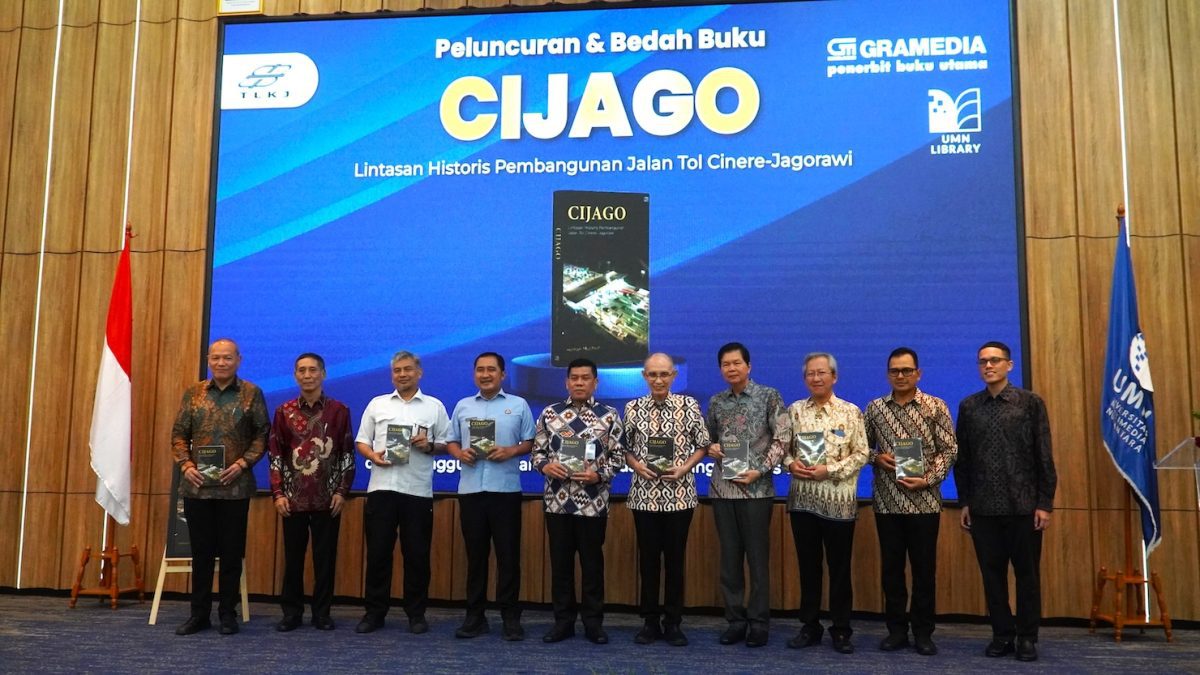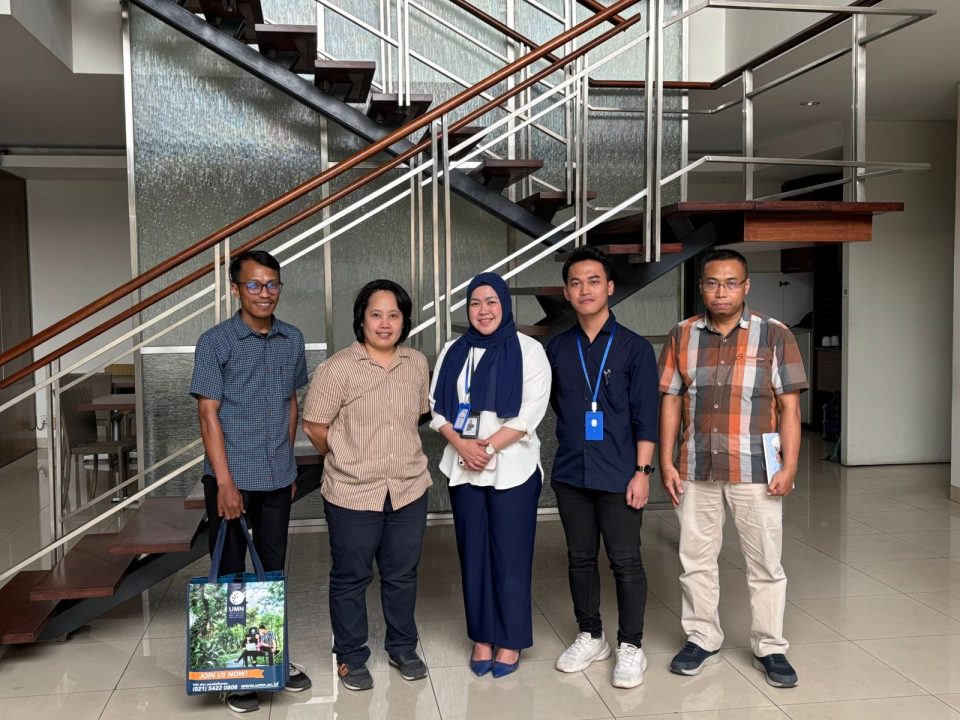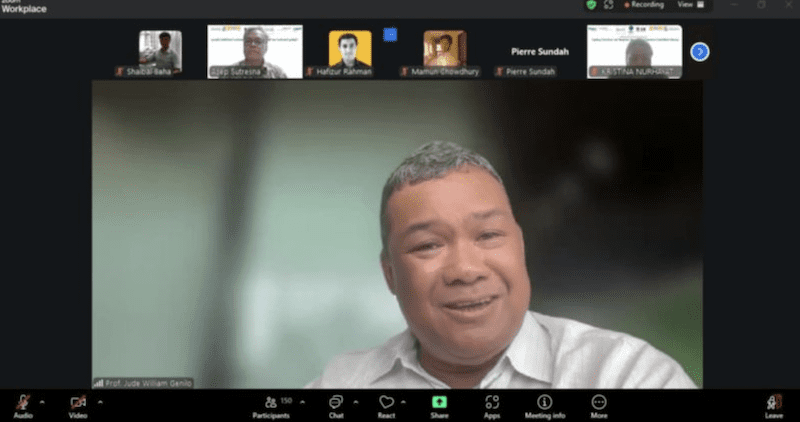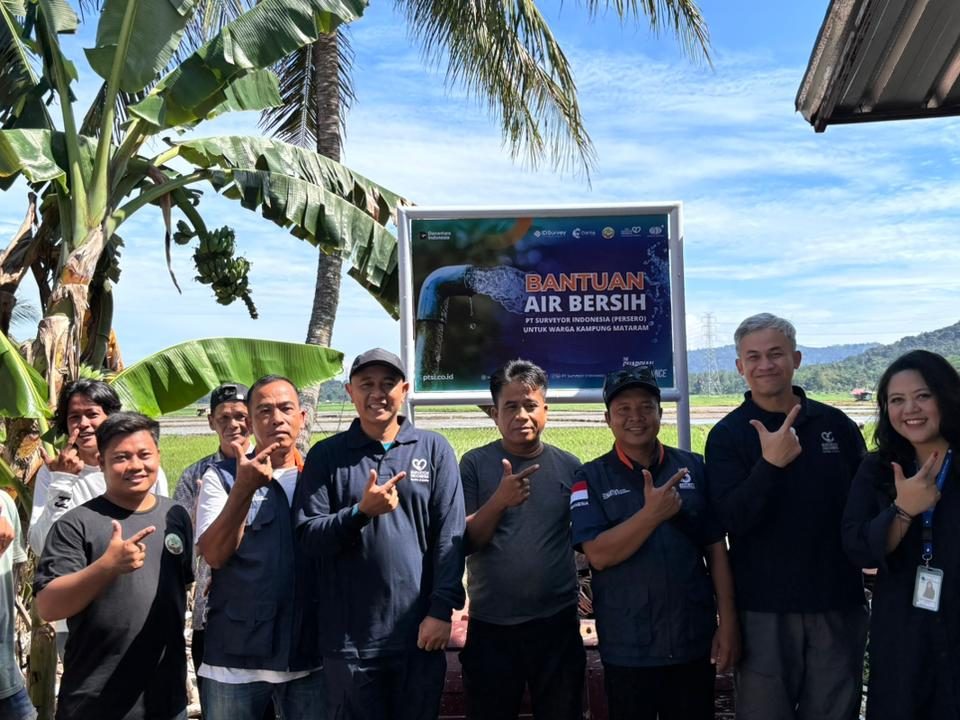
CIC 2025: Promoting Academic Collaboration and AI-Based Innovation for a Sustainable Future
September 12, 2025
UMN Strengthens Its Contribution to Sustainability for Tangerang Regency at The 2025 SDGs Seminar
September 12, 2025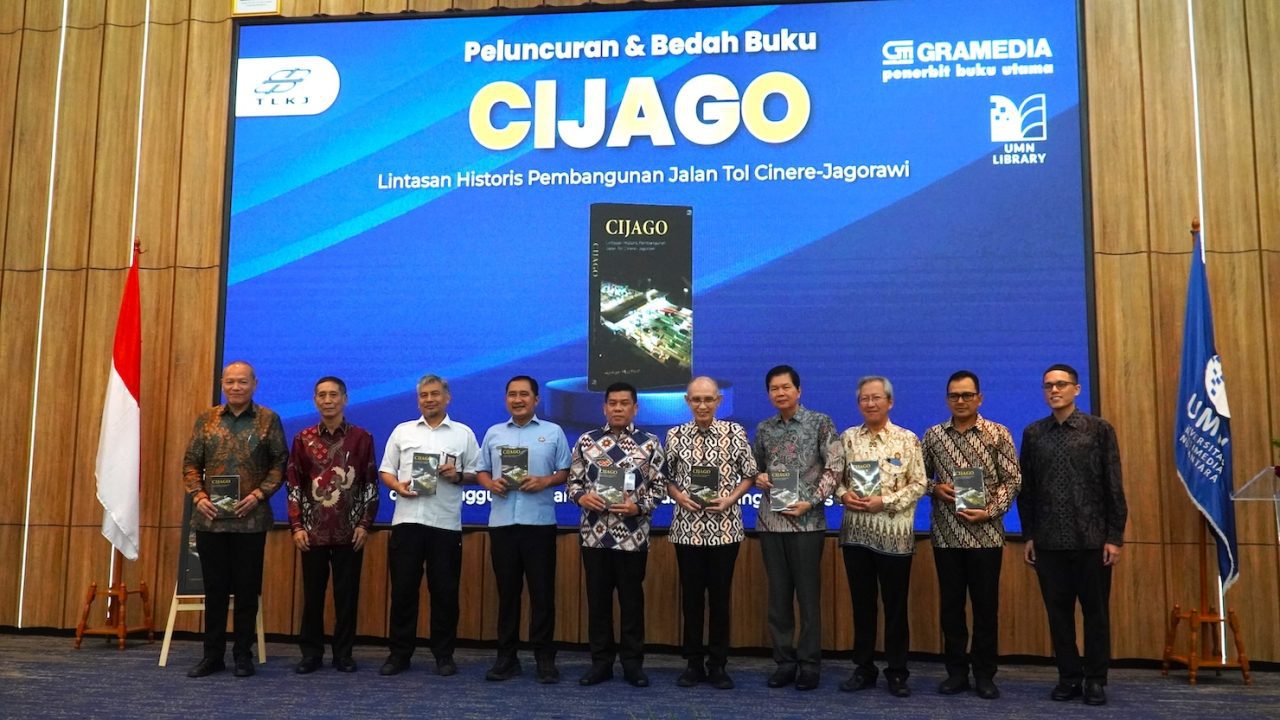
Photo session with executives from Kompas Gramedia, Universitas Multimedia Nusantara (UMN), Gramedia Pustaka Utama (GPU), and Translingkar Kita Jaya (TLKJ). (Doc. UMN)
Tangerang, September 9, 2025 – Universitas Multimedia Nusantara (UMN), together with PT Trans Lingkar Kita Jaya (TLKJ) and Gramedia Pustaka Utama (GPU) Publishing, launched the book CIJAGO: Historical Trajectory of the Cinere–Jagorawi Toll Road Construction in Tangerang on Tuesday (9/9/2025). The launch event, which included a book discussion, was attended by several infrastructure and transportation figures and hundreds of UMN students.
The book chronicles the construction process of the Cinere–Jagorawi Toll Road (Cijago), one of the strategic projects strengthening connectivity in the Greater Jakarta area. Its contents highlight the historical journey, planning challenges, and project implementation while emphasizing the role of infrastructure in facilitating mobility, reducing traffic congestion, and opening up economic opportunities in the capital’s buffer zone.
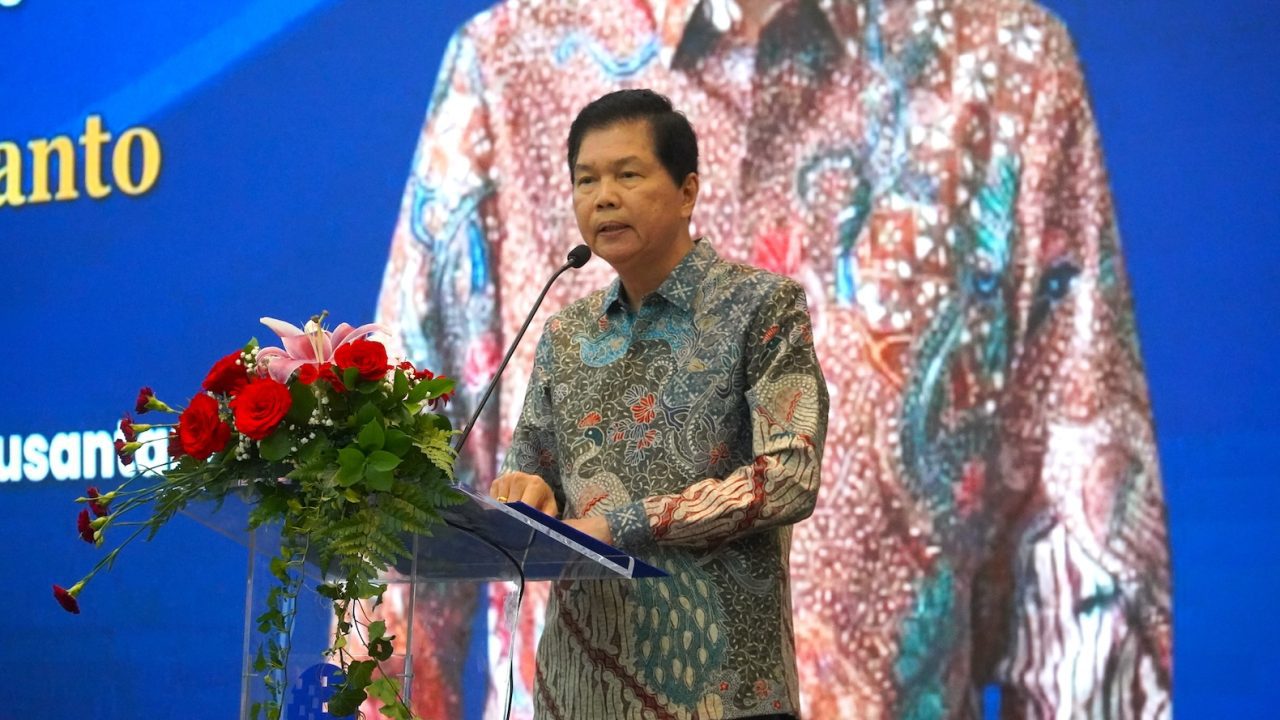
Opening remarks by the Chairman of the Multimedia Nusantara Foundation, Teddy Surianto. (Doc. UMN)
“The launch of this book is the result of a collaboration between the UMN Library and Gramedia Pustaka Utama Publishers. CIJAGO is an acronym for Cinere-Jagorawi and is one of the toll roads connecting the Cinere, Depok, and surrounding areas. Of course, this toll road strengthens east-west connectivity on the southern side of Jabodetabek. For me, this is a concrete form of private sector contribution to supporting sustainable national development,” Ir. Teddy Surianto said in his opening remarks at the book launch.
Teddy hopes that the launch and discussion of the CIJAGO book will be a source of inspiration and learning for academics, industry players, and the younger generation who want to understand the complexity of toll road development from a practitioner’s perspective. The UMN’s rector attended the opening of the CIJAGO book launch event.
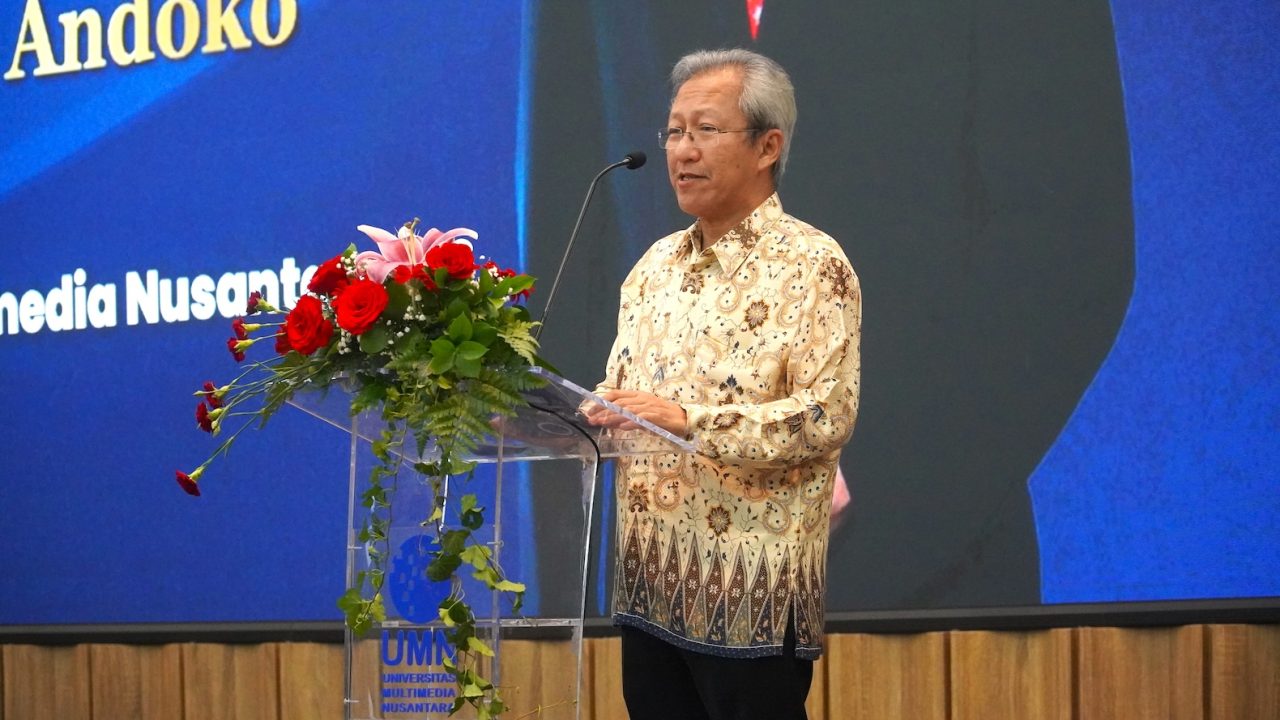
Remarks by UMN Rector, Andrey Andoko. (Doc. UMN)
“It is an honor for UMN to host the launch of the CIJAGO book. The existence of this toll road plays an important role in connectivity and supports the regional and national economy. The book launched today documents the journey of the real challenges faced over time until the Cijago Toll Road was realized, and the story of this toll road can be an inspiration and lesson for both the current and future generations,” said Dr. Andrey Andoko, Rector of UMN.
Furthermore, Andrey explained two current focuses at UMN that could initiate toll road development ideas: Artificial Intelligence (AI) and Sustainability. Andrey stated that the architecture and physics engineering study programs focus on green energy and infrastructure, enabling them to participate in future development projects.
“My hope is that the launch of this book will be useful for academics, from lecturers to students, and can become very useful material to support learning. I am sure that this activity can open up various opportunities for future collaboration, from projects to research,” continued Andrey. Furthermore, this activity was also opened by Ir. R. Sony Sulaksono Wibowo, M.T, Ph.D, Board of Directors of BPJT.
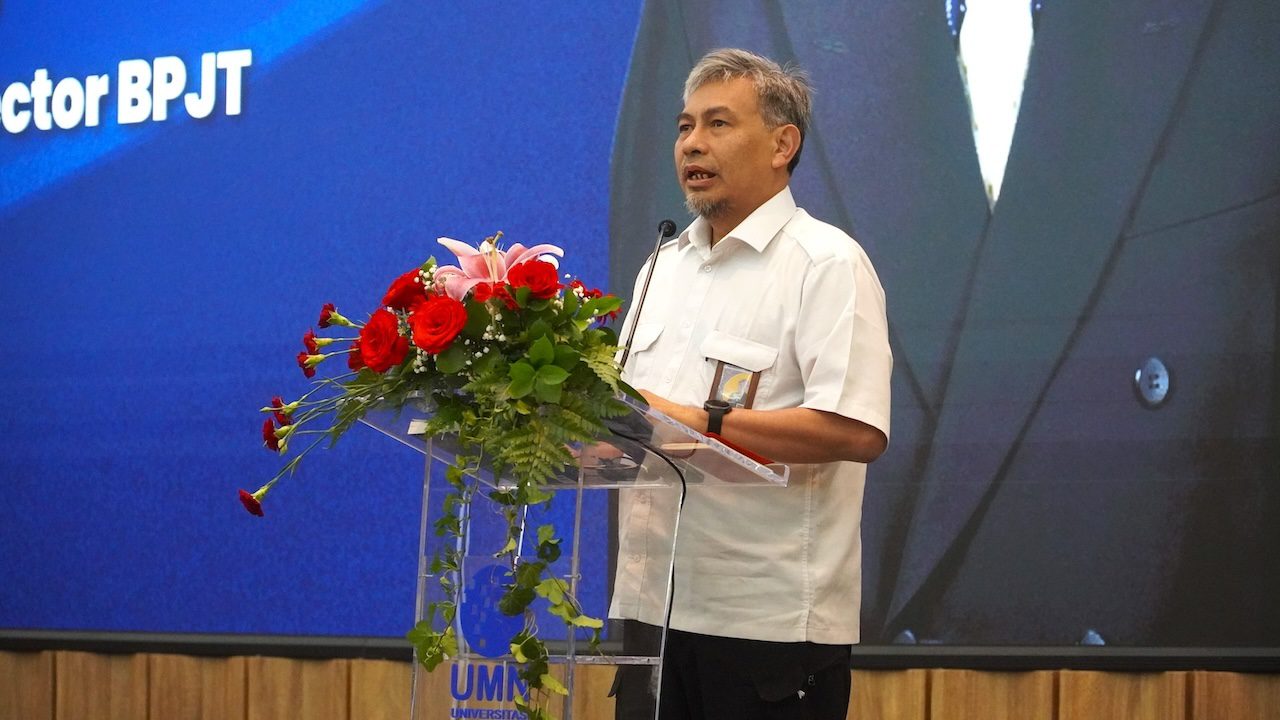
Remarks from Sony Sulaksono Wibowo, Representative of the Board of Directors of BPJT. (Doc. UMN)
“Currently, the length of toll roads in Indonesia reaches 392,000 kilometers, not only expanding the country’s connectivity network but also becoming a tremendous business investment. We can see many roles in this book, not only from a technical perspective but also from a business perspective. How toll roads can expand the economy and business, starting from tourism, exports, imports, and other things,” Sony said.
For Sony, this book not only explains how to build toll roads but also how the toll road infrastructure development business works. Sony also stated that the toll road business can build existing commitments to advance existing regions and create new business breakthroughs.
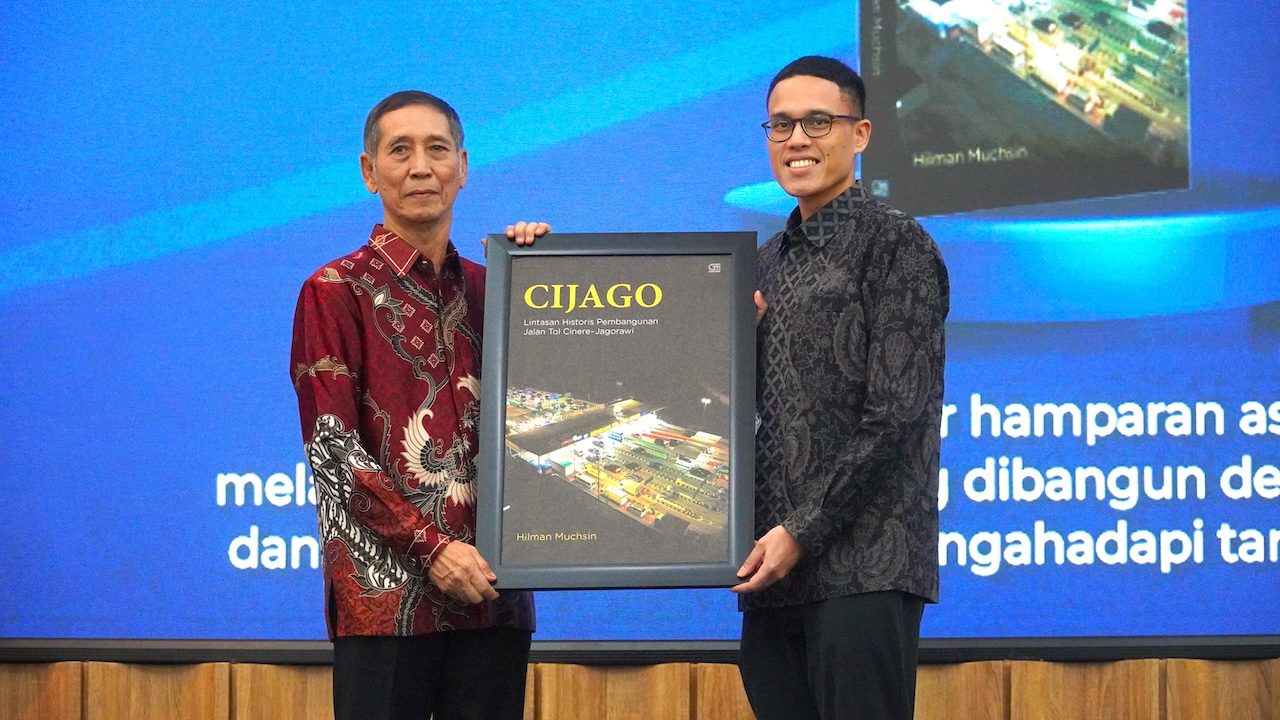
Symbolic handover of the mockup from Adhiyaksa Ekatama, Gramedia Publishing & Education Director (right), to Hilman Muchsin as President Director of PT Translingkar Kita Jaya (left). (Doc. UMN)
This event was followed by the official launch of the book CIJAGO: Lintasan Historis Pembangunan Jalan Tol Cinere–Jagorawi (CIJAGO: The Historical Trajectory of the Cinere–Jagorawi Toll Road Development) by Hilman Muchsin, M.M., M.T., President Director of PT TLKJ, Adhyaksa Ekatama, Director of Publishing & Education, along with the board of directors of Kompas Gramedia and Yayasan Multimedia Nusantara.
The book CIJAGO: Historical Trajectory of the Cinere–Jagorawi Toll Road Development is expected to be a valuable reference for academics, students, business people, and public policy practitioners in understanding the strategic role of toll roads as drivers of regional growth.
Book review session for CIJAGO: Historical Trajectory of the Cinere–Jagorawi Toll Road Development
The event also featured the Secretary General of the Indonesian Toll Road Association, Dr. Ir. Krist Ade Sudiyono, M.M., as the introductory speaker, Hilman Muchsin, M.M., M.T., as the keynote speaker, and was moderated by UMN Management Study Program Lecturer, Dr. Amanda Setiorini, S.Psi., M.M., CIQaR.
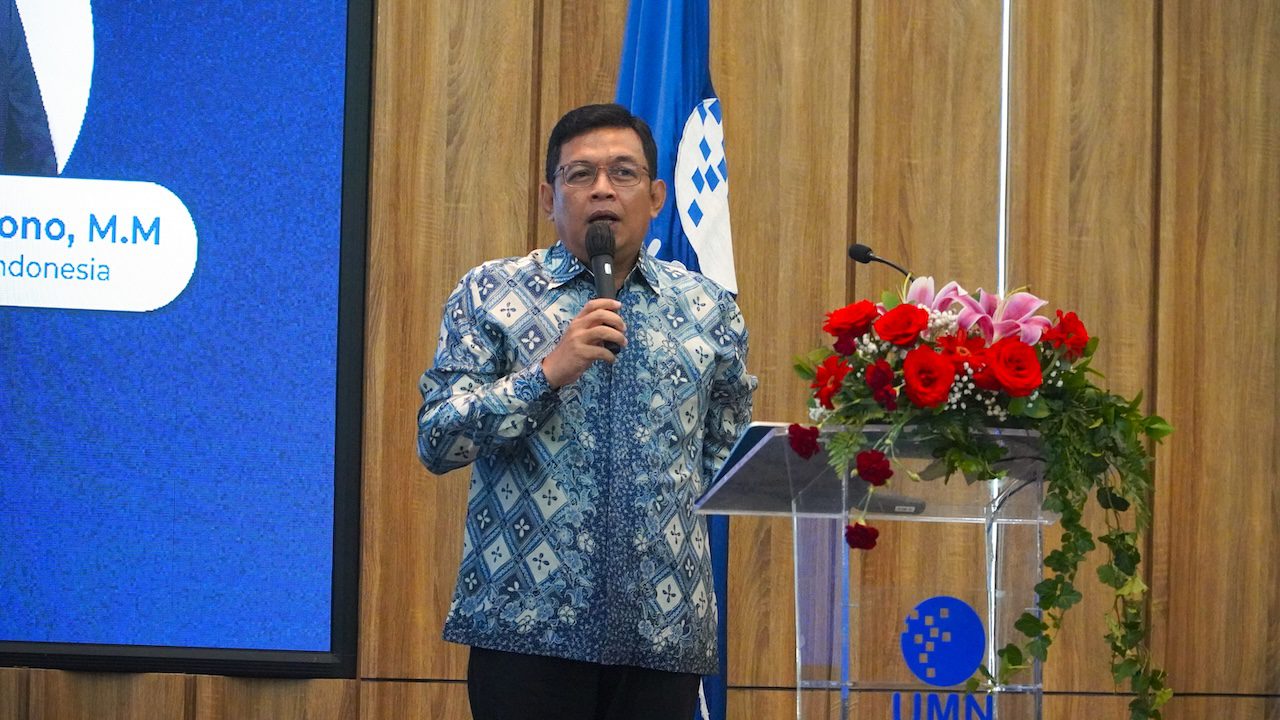
Opening Remarks by Krist Ade Sudiyono, Lecturer at the UMN Master of Management Study Program, CEO of PT Marga Lingkar Jakarta (MLJ). (Doc. UMN)
“The construction of the first toll road in Indonesia began in 1978, the Jagorawi Toll Road. Currently, toll roads in Indonesia have developed rapidly. From a business perspective, toll road investment is indeed a very good opportunity. The construction of toll roads in Indonesia itself not only opens up potential partnerships with state-owned enterprises but also with foreign companies,” Dr. Ir. Krist Ade Sudiyono, M.M., said in his introduction.
However, this is not an easy task for Ade, considering that not all areas in Indonesia can be immediately invested in. Various factors must be considered, such as the areas that need to be connected, because for Ade, there must be attractive opportunities beyond the availability of toll roads.
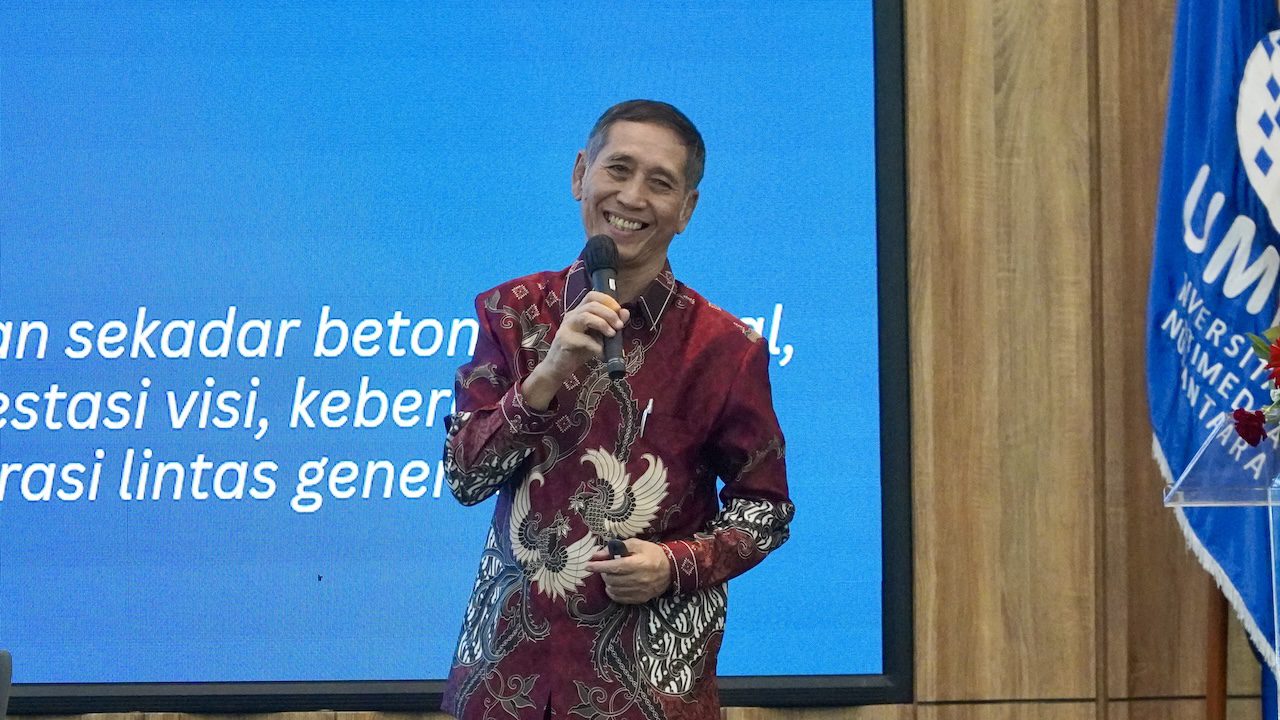
Keynote Speaker for the CIJAGO Book Launch: The Historical Development of the CIJAGO Toll Road, Hilman Muchsin, President Director of PT. Translingkar Kita Jaya (TLKJ). (Doc. UMN)
“The journey of the Cijago Toll Road construction began in Depok, which became an autonomous city. By becoming an autonomous city, Depok had the opportunity to develop its own urban spatial planning. This became the starting point for the development of the Cijago Toll Road. Of course, I was not alone, but was also assisted by the academic community,” said the President Director of PT TLKJ Ir. Hilman Muchsin, M.M., M.T., as the keynote speaker.
The construction of the Cijago Toll Road also prioritizes a sustainable transportation system. Hilman stated that a sustainable transportation system is not only about the environment and infrastructure, but also the support of all parties. For Hilman, a toll road is not just a stretch of asphalt and concrete, but also a path of hope built with vision, perseverance, and resilience in facing the passage of time.
“A toll road is not merely a physical construction, but the result of the integration of technical, financial, legal, and social aspects. The Cijago Toll Road is proof of how infrastructure development can bring long-term strategic value to the community,” added Hilman.
The book CIJAGO: Lintasan Historis Pembangunan Jalan Tol Cinere–Jagorawi (CIJAGO: The Historical Trajectory of the Cinere–Jagorawi Toll Road Development) has a narrative-informative writing style. It reviews the technical aspects of development and emphasizes sustainability, efficiency, and its contribution to the regional economy. This book enriches Indonesian infrastructure literature, bridging the academic world, practitioners, and the wider community.
Gramedia, through its publishing efforts, is committed to presenting works relevant to Indonesia’s development, including infrastructure literature. This book enriches the knowledge of the public, academics, and policymakers regarding the dynamics of strategic development that has a broad impact on the economy and social life.
By UMN Public Relations Team
English translation by Levina Chrestella Theodora
Kuliah di Jakarta untuk jurusan program studi Informatika| Sistem Informasi | Teknik Komputer | Teknik Elektro | Teknik Fisika | Akuntansi | Manajemen| Komunikasi Strategis | Jurnalistik | Desain Komunikasi Visual | Film dan Animasi | Arsitektur | D3 Perhotelan , di Universitas Multimedia Nusantara.

